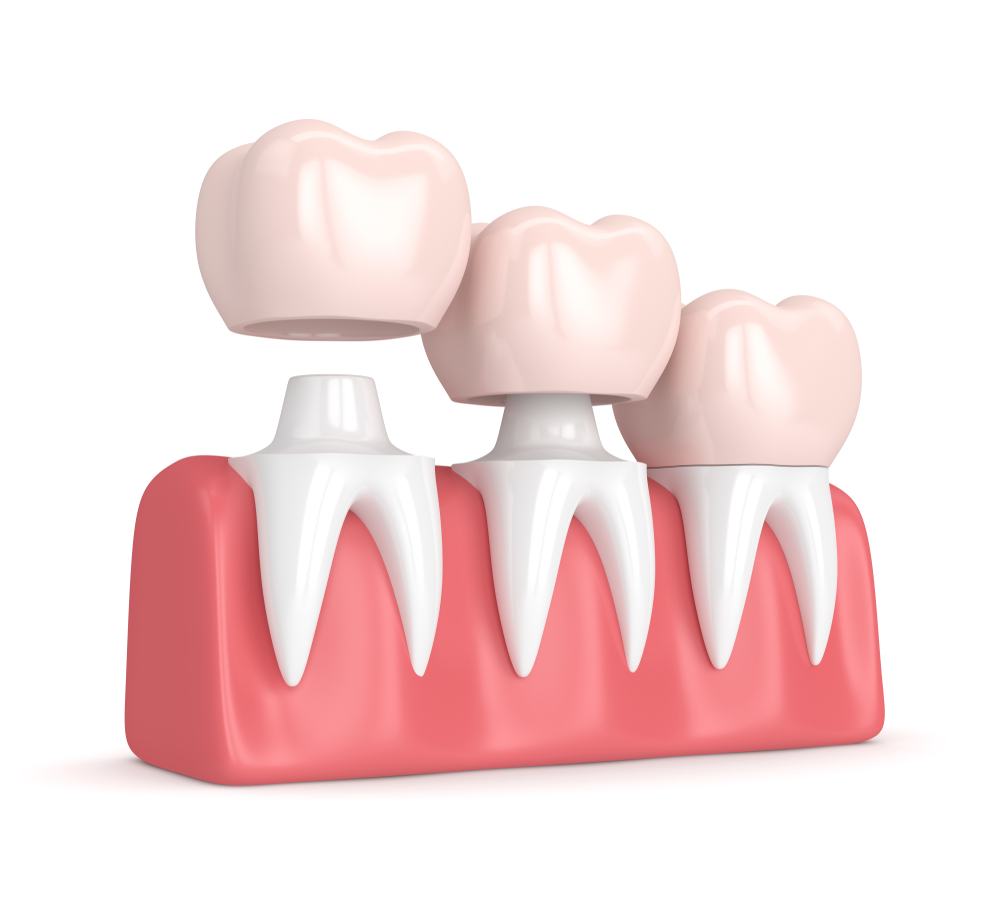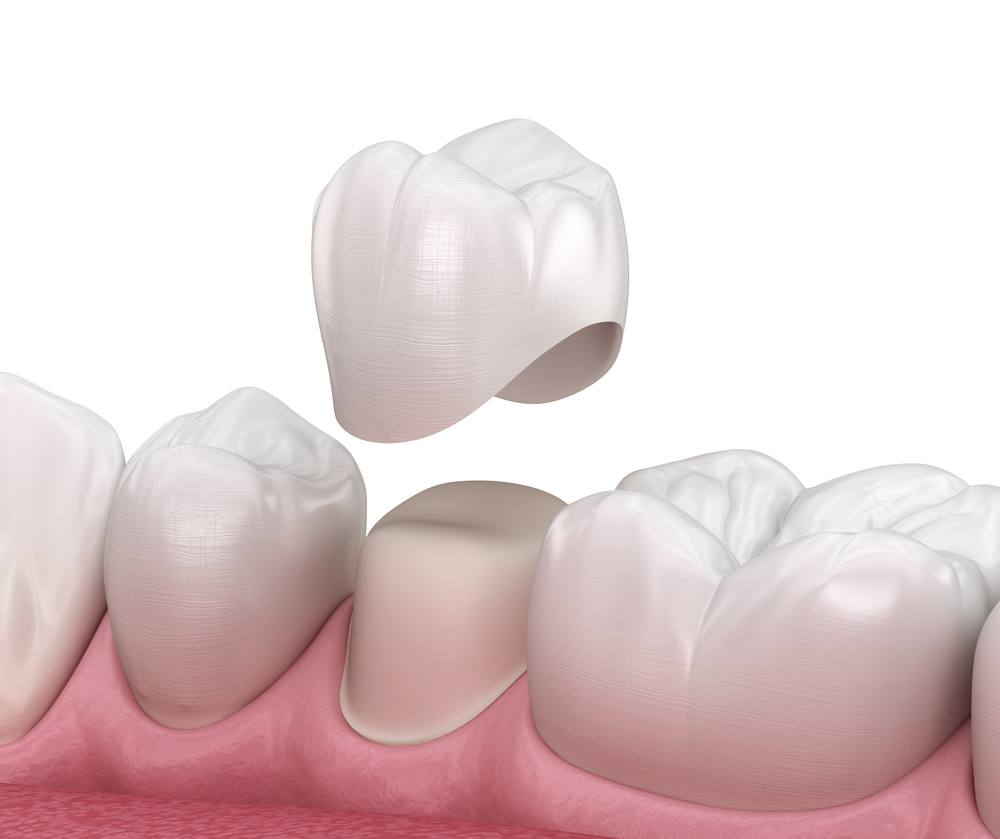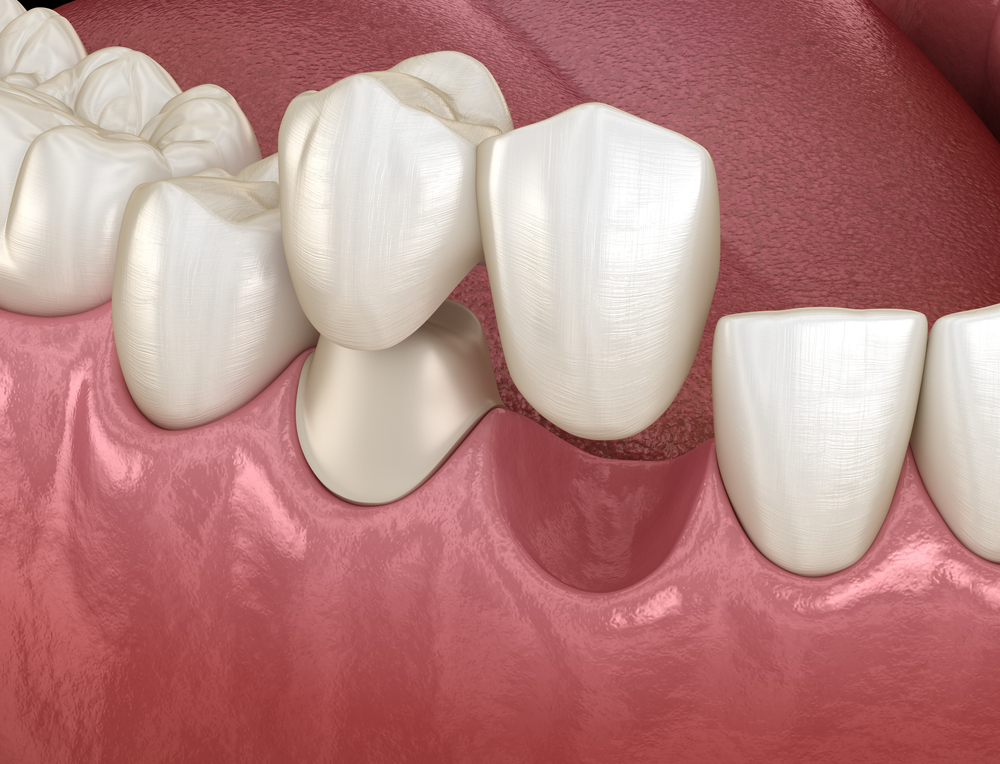Crowns and Bridges
 CROWNS
CROWNS
Crowns are restorations that replace the entire visible structure of a severely damaged tooth. A bridge is a replacement tooth anchored by crowns or existing teeth on either side.
What is a crown?
Sometimes the surface of a tooth becomes too badly damaged to be fixed with a filling or other dental technique, but the root structure beneath the gums is still strong. In this case, Dr. Schmidt can cement a crown or “cap” on the old tooth. This crown will completely cover what is left of the existing tooth, and will be sized and shaped just like the original healthy tooth. Crowns are made of different materials, and the circumstances of each patient will determine which material is best.
Why would I need a crown?
Crowns are used when a tooth is too damaged for a filling, when a tooth is badly cracked or broken, when a tooth has become badly worn down. Crowns are a good solution because Dr. Schmidt can save the healthy structure of the existing tooth and the healthy roots. He just creates a totally new tooth surface that is strong and durable and keeps your teeth stable.
Why use a crown instead of a filling?
Fillings are used when there is a spot of decay in an otherwise healthy tooth. But sometimes there is too much damage to the structure of a tooth to even safely hold a filling. If a large percentage of the tooth is damaged, the entire visible surface of the tooth above the gumline can be replaced with a crown.
 Why use a crown instead of pulling the tooth?
Why use a crown instead of pulling the tooth?
The roots of your teeth are firmly planted in your gumline, and your teeth affect the way your face looks. A crown rebuilds the tooth to its original size and shape, saving as much of the healthy tooth and root as possible, and preserving the spacing between the remaining teeth. Removed teeth leave gaps that can cause improper bite and change the appearance of your face.
What are the types of dental crowns?
Crowns are distinguished by the materials they are made from. There are typically three types available. Dr. Schmidt can explain which materials make sense for you based upon your individual circumstances because each material has its own advantages.
Gold Crowns
Gold is an excellent material for crowns because the material is extremely workable and provides and excellent fit between the crown and the existing tooth. Gold requires the least preparation of the existing tooth, keeping more of the original tooth structure than is possible with other methods. There is no possibility of gold crowns chipping, and since they are not as hard as porcelain crowns, they are not as likely to cause wear on other teeth. The downside of gold may be its distinctive appearance. In the back of the mouth, where gold is often used, this may not be an issue. However, when it is visible in your smile, the gold crown will make an obvious contrast with natural teeth.
All Porcelain or All Ceramic Crowns

These crowns offer the advantage of a very natural appearance, and for this reason are often used for front teeth. Porcelain can be created to perfectly match your surrounding teeth, making the crowns almost indistinguishable. This type of crown does require considerable preparation, leaving less of the existing tooth, and it is often challenging for the dentist to get a fit as tight as with a gold crown. Their beautiful, life-like appearance continues to make them a popular choice.
Porcelain-over-Metal Crowns
This popular crown type provides an excellent combination of esthetics and durability. The porcelain is color matched to your existing teeth and fused to a metal base. With a metal center, this type of crown can never match the translucency of a natural tooth or an all porcelain crown, and a thin darker line can develop where it meets the gum. However porcelain-over-metal crowns look very natural and are exceptionally strong and durable.
What is the procedure for placing a crown?
If the tooth is extremely damaged, Dr. Schmidt may perform a root canal first. Otherwise, he will prepare the tooth by filing it down enough to fit the crown over it and between the adjacent teeth. The filed down tooth will be the base that Dr. Schmidt cements to the finished crown. He will then take impressions of the tooth and the surrounding teeth which the lab will use as a model for the new crown. Since the lab typically takes two weeks to prepare the permanent crown, he will often insert a temporary crown until the permanent one is ready. On a second visit, the temporary crown is removed, and the permanent crown is cemented in.
How long do crowns last?
Crowns are considered permanent dental restorations, but that does not mean they are expected to last forever. With proper hygiene a dental crown will probably last from ten to fifteen years, but could last much longer.
BRIDGES
 When a tooth is missing, and not just damaged, crowns can be used as anchors on adjacent teeth, with a false tooth attached to “bridge” the gap.
When a tooth is missing, and not just damaged, crowns can be used as anchors on adjacent teeth, with a false tooth attached to “bridge” the gap.
What is a bridge?
A bridge is a false tooth that is fused to one or two crowns. This false tooth, or pontic, is held in its position on the gum by the anchoring crowns next to it.
What kind of bridges are there?
• The traditional fixed bridge is a false tooth fused to two crowns. The crowns fit permanently on the teeth on both sides of the new false tooth, and anchor it in place as a “bridge” over the gum. This dental technique is otherwise similar to regular crown procedure. The fixed bridge offers the most natural fit and appearance.
• The cantilever bridge is a false tooth that is anchored to a tooth or teeth on one side, and not the other. This dental technique is otherwise similar to regular crown procedure. A cantilever bridge does not have the same strength as a traditional fixed bridge and can only be used in areas of less stress, like front teeth.
• The removable bridge is not cemented permanently. It may be available at a lower cost, but will require extra hygiene attention.
What alternatives do I have to a bridge?
A partial denture is a removable appliance that can replace one or more teeth, and dental implants are a permanent alternative for missing teeth. Ask Dr. Schmidt about the advantages of each in your particular situation.